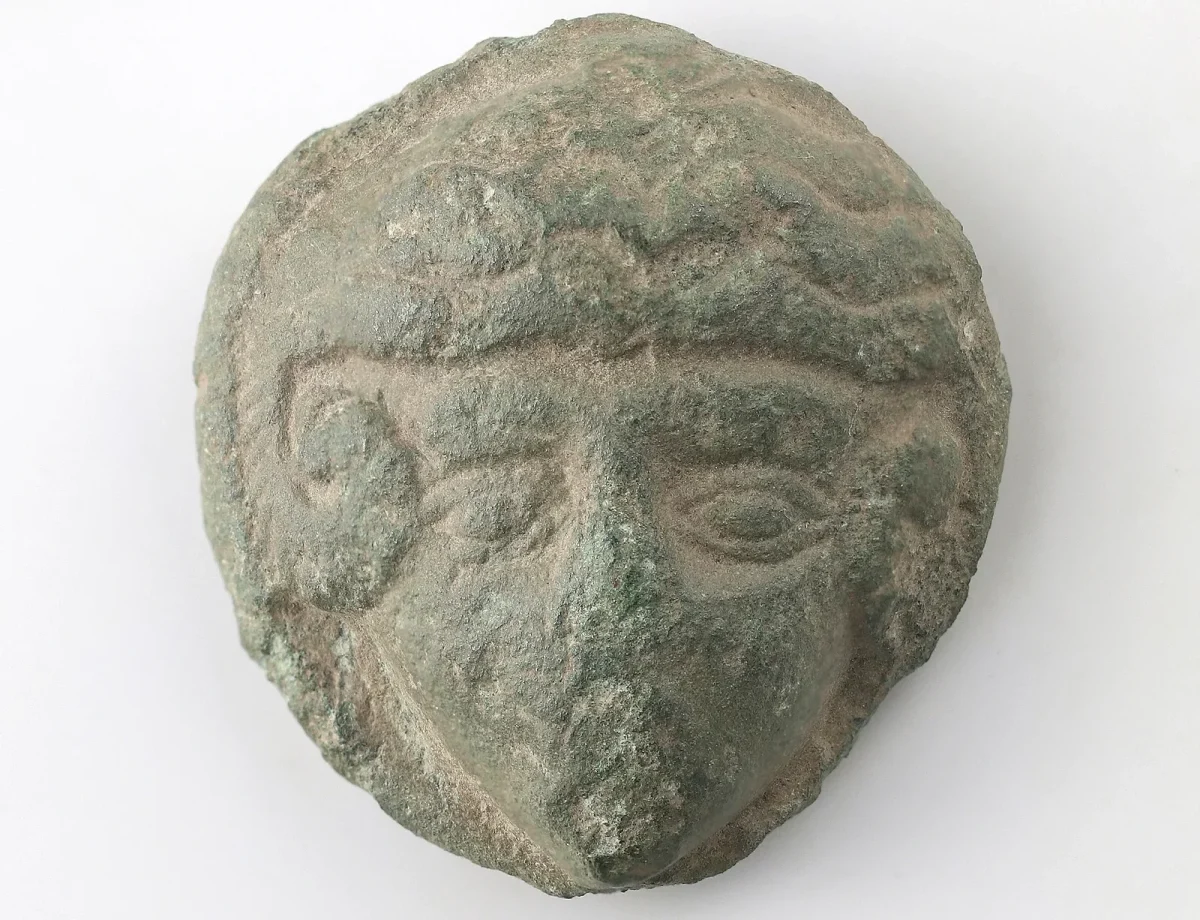Two amateur archaeologists in Denmark have sparked excitement and raised a multitude of questions about the presence of a legendary figure in the region. A small bronze fitting depicting Alexander the Great, one of history’s most renowned conquerors, was unearthed near Ringsted on the island of Zealand.
Alexander the Great (356-323 BCE) carved a vast empire stretching from Greece to India, etching his name in history as a brilliant military strategist. Even after his death at the young age of 32, his legacy continued to inspire, particularly Roman emperors who saw him as a role model.
The newfound fitting, measuring a mere 26-28 millimeters in diameter, portrays Alexander with his characteristic flowing locks and the defining ram’s horns, a symbol of his association with the god Zeus-Ammon. This depiction aligns closely with another Alexander portrait found on a decorative shield disc unearthed from the Illerup Ådal bog near Skanderborg. Both artifacts are believed to date back to the Roman Iron Age, roughly 200 AD.
“This is a truly unique find in Scandinavia,” says Freerk Oldenburger, an archaeologist at Museum Vestsjælland. “It directly connects this region to one of the most celebrated figures in world history.”
The discovery holds particular significance for Finn Ibsen and Lars Danielsen, the amateur archaeologists who stumbled upon the relic. Initially perplexed by the image, they only grasped its true significance upon consulting experts. “It’s incredible to think we’ve unearthed something that takes us back 2,000 years,” they remark.
However, the fitting presents more puzzles than definitive answers. Its exact purpose remains unclear – was it intended to adorn a shield or a sword belt? The lead-containing bronze alloy used in its casting aligns with Roman practices, raising questions about its origin. Did the Romans create it directly, or was it fashioned from a repurposed Roman statuette, perhaps even one melted down on Zealand itself?
The path by which this fitting ended up in a Danish field near Ringsted is yet another mystery. Perhaps even more intriguing is the question of what Alexander the Great’s image signified for the Germanic people who inhabited the region around 200 AD. Did they believe it possessed some power on the battlefield, a symbol of good fortune or martial prowess?
The sheer number of unanswered questions surrounding this find underscores its unique value. It has ignited the curiosity of experts, who are now driven to unravel the veil of secrecy shrouding this intriguing relic. As further research unfolds, the fitting may offer a glimpse into the cultural exchange between ancient civilizations and shed light on the fascinating ways historical figures like Alexander the Great transcended geographical boundaries and captured the imagination of people far beyond their empires.
